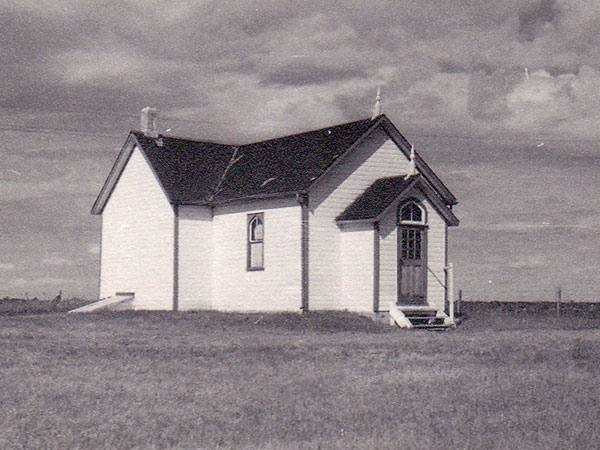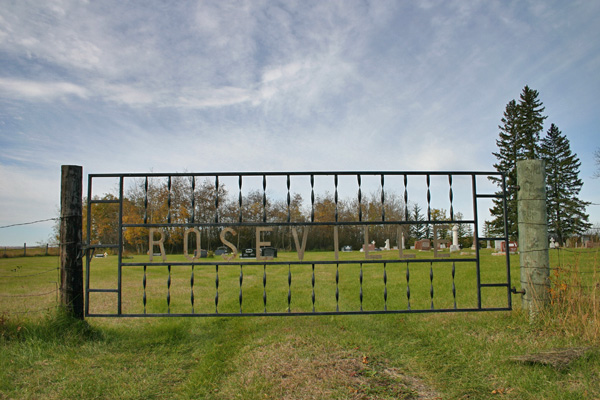
Additional Resources The Roseville Mission Hall – A Practical Pioneer Project From Train Tracks - Stories from a Railway Town In
pioneer times, there were two main highways west, the Assiniboine
River and the Fort Ellice (or Carleton) Trail. The first homesteaders
to arrive chose the best land they could find close to one of those
highways. Latecomers had to range out a little farther. Once here,
there were two huge considerations when choosing that homestead, over
and above the suitability of the land itself. Land near streams had
both water and wood the essentials for getting started, so those spots
were taken first. The territory running along the east side of the
Little Saskatchewan valley was desirable for all the above reasons.
 The Roseville Mission Hall About midway between Brandon and Rivers, at the junction of Road 65 N and 117 W, there is a well-tended cemetery with a cairn dedicated to the Roseville Congregation and the first church in the area. In some ways the story of the church is typical, a story repeated across the prairies. The first services were held in homes with itinerant Ministers. In this case Reverend John B. Sargent from Brandon was sent out by the Anglican Church to Rapid City and he used to walk out to the J.C. Cousin farm. Next, a group would start planning, and raising funds for a church. In this case Dick Cousins got the ball rolling. Then someone might help by donating land. In this case it was the James Varcoe family, and they included enough land for a cemetery as well. Here the story departs a bit from the standard pattern All congregations were anxious to build a church, but money was in short supply. The solution was to cooperate, so four denominations decided to share the facility. The Anglicans. Baptists, Methodists and Congregationalists congregations each would supply the Minister on one Sunday of each month. They called it the Roseville Mission Hall, and the spirit of cooperation went well beyond the sharing of the space. The funds and collections were all pooled and managed by a joint treasurer. Most parishioners joined heartily in the services whether it was their particular denomination or not. Once the Mission Hall was established and serving the community, the story moves back to a familiar pattern.  The well-tended cemetery is still in use. The final chapter was played out as rural de-population and improved roads made it more convenient to amalgamate with the Churches in town. In 1983 a special service took place to unveil and dedicate a cairn, which now stands in Roseville Cemetery. A newspaper report in 1888 takes issue with the claim by their neighbours from Tarbolton that their district’s new church was the first church in the municipality. The writer, Fanny Varcoe, informs us that their church was built in 1884, that indeed, the first wedding in the building took place on Dec 16, 1884, and that by 1888 there were five internments in the cemetery. And so the victory, a decisive one, goes to …Roseville. |